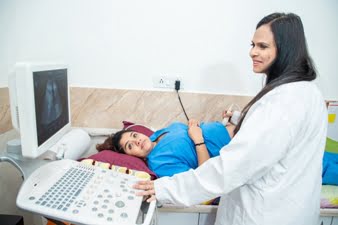Why is USG B/L Inguinal Region Important?
The USG B/L Inguinal Region is a vital diagnostic tool for evaluating various conditions affecting the groin area. If you’re searching for a near me sonography centre in Pune, Diagnopein offers advanced imaging and accurate results. Here’s why this test is important:
1. Detection of Inguinal Hernias: This ultrasound helps detect inguinal hernias, where tissue, often part of the intestines, protrudes through a weak spot in the abdominal muscles. It assesses the size, location, and nature of the hernia, aiding in determining the need for treatment or surgery.
2. Evaluation of Lymph Nodes: Enlarged lymph nodes in the inguinal region, which may indicate infections or conditions like lymphadenopathy, can be effectively visualized. The scan provides detailed views of lymph nodes, helping to identify abnormalities.
3. Assessment of Soft Tissue Masses: The inguinal region may develop soft tissue masses like lipomas (benign fatty tumors). Ultrasound helps distinguish between different types of masses, determining if further investigation is needed.
4. Investigating Groin Pain: For individuals experiencing groin pain or swelling, this test identifies causes such as hernias, infections, or muscle strains, guiding appropriate treatment.
5. Infections or Abscesses: Ultrasound imaging can detect infections or abscesses in the groin area, allowing healthcare providers to determine the severity and plan treatments like drainage or antibiotics.
6. Post-Surgical Follow-Up: For patients who have undergone surgeries like hernia repair, the test monitors for complications, including hernia recurrence or infections.
How is the USG B/L Inguinal Region Performed?
At Diagnopein, a leading sonography centre near me in Pune, the USG B/L Inguinal Region is performed as follows:
1. Preparation: No special preparation is required, but patients are advised to wear comfortable clothing for easy access to the groin area. You may need to lie on your back or side during the scan.
2. Procedure: A gel is applied to the groin area to help transmit sound waves. A transducer is moved gently over the region, emitting high-frequency sound waves that produce images of internal structures like muscles, lymph nodes, and blood vessels. The scan covers both the left and right inguinal regions to ensure comprehensive evaluation.
3. Duration: The test typically takes 15 to 30 minutes, depending on the area being examined and the complexity of the condition.
4. Post-Procedure: After the scan, the gel is wiped off, and patients can resume normal activities immediately. The non-invasive nature of the procedure ensures no recovery time is required.
Who Should Consider a USG B/L Inguinal Region?
This test is beneficial for individuals with symptoms or risk factors affecting the groin area. At Diagnopein in Pune, it is recommended for:
1. Patients with Groin Pain or Swelling: Those experiencing unexplained groin discomfort or swelling, especially with activity, may need this scan to check for hernias or other issues.
2. People with a History of Hernias: Individuals previously treated for hernias or with a family history of hernias may benefit from this test to detect recurrence or new hernias.
3. Patients with Lymphadenopathy: Enlarged lymph nodes in the groin, potentially linked to infections or cancer, can be evaluated with this scan to identify underlying causes.
4. Individuals with Soft Tissue Masses: Anyone noticing lumps in the groin, which could indicate lipomas, cysts, or abscesses, can use this test for a detailed evaluation.
5. Post-Surgical Monitoring: Those who have undergone inguinal surgeries, like hernia repairs, can use this ultrasound for follow-up evaluations to check for complications or recurring issues.









